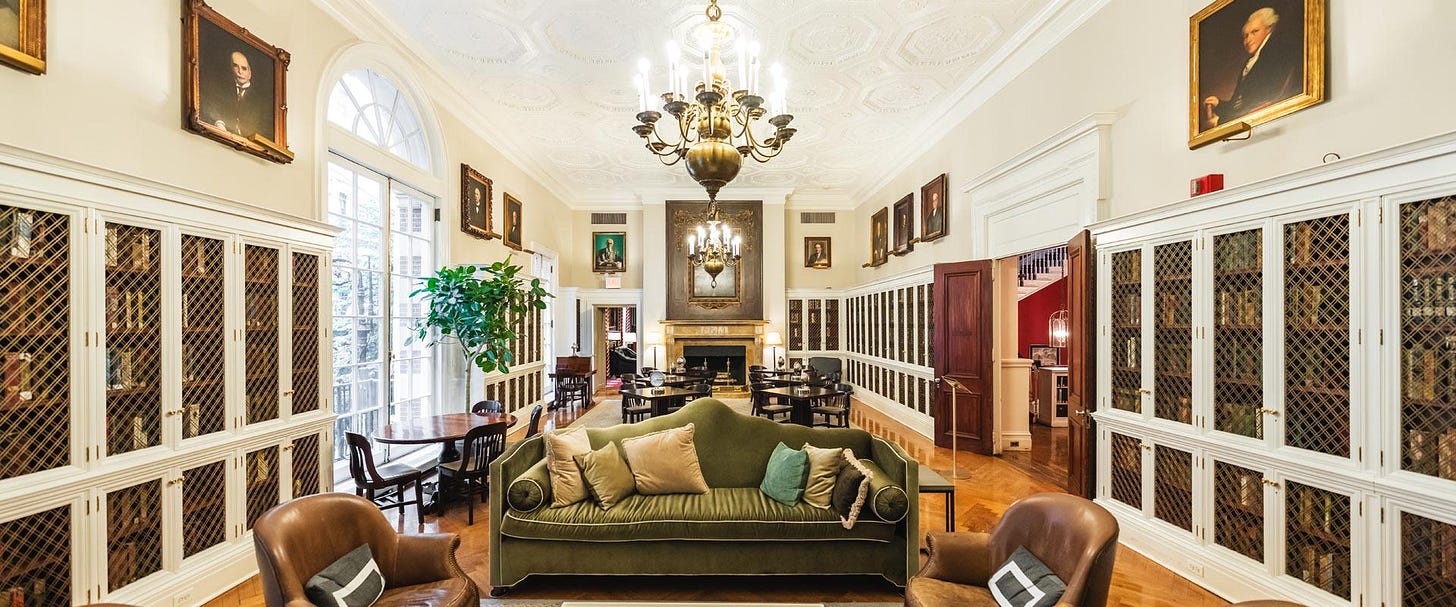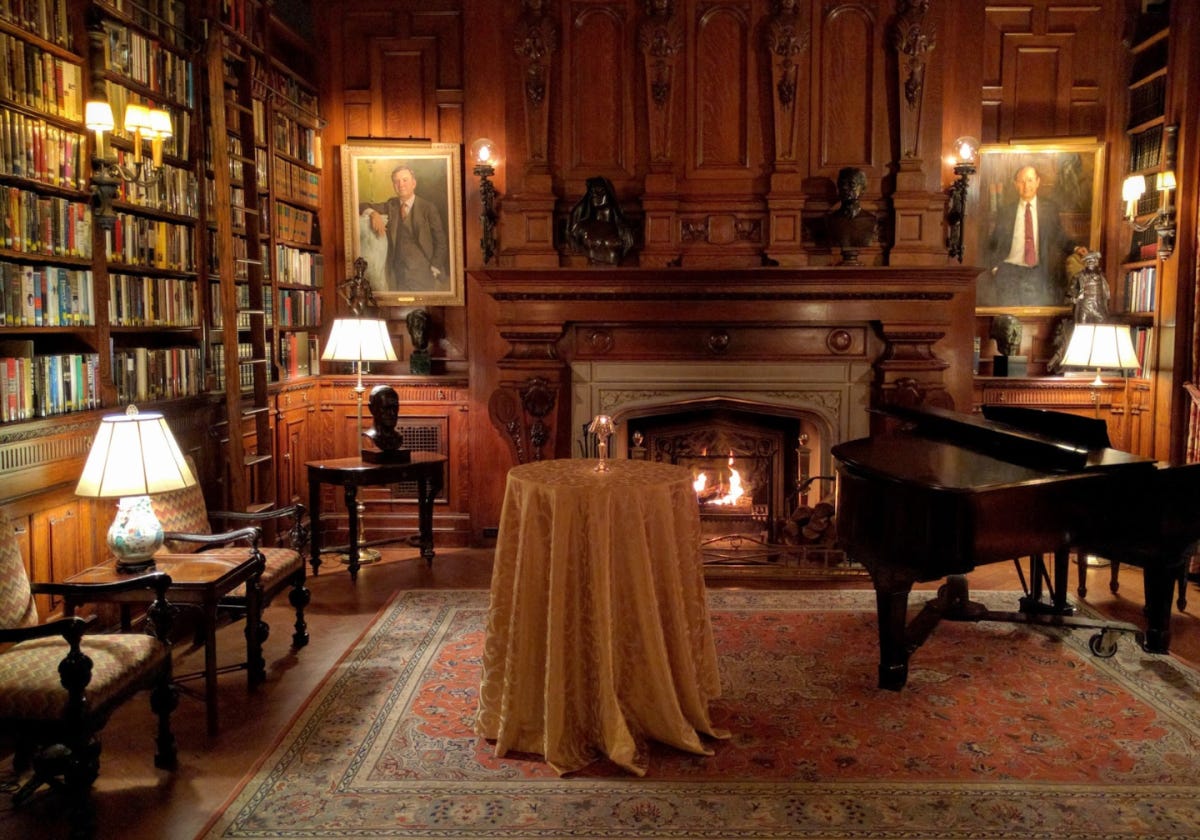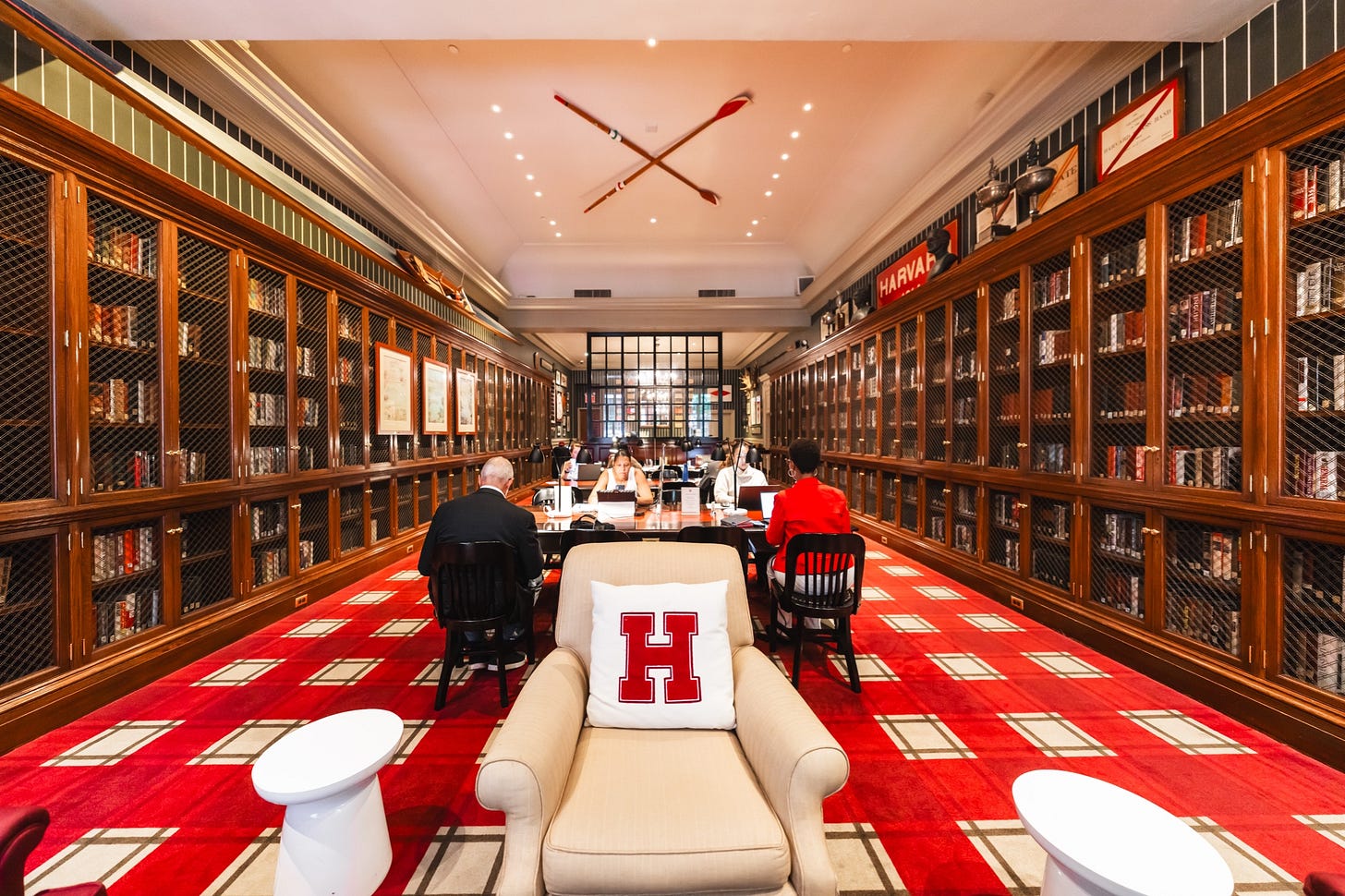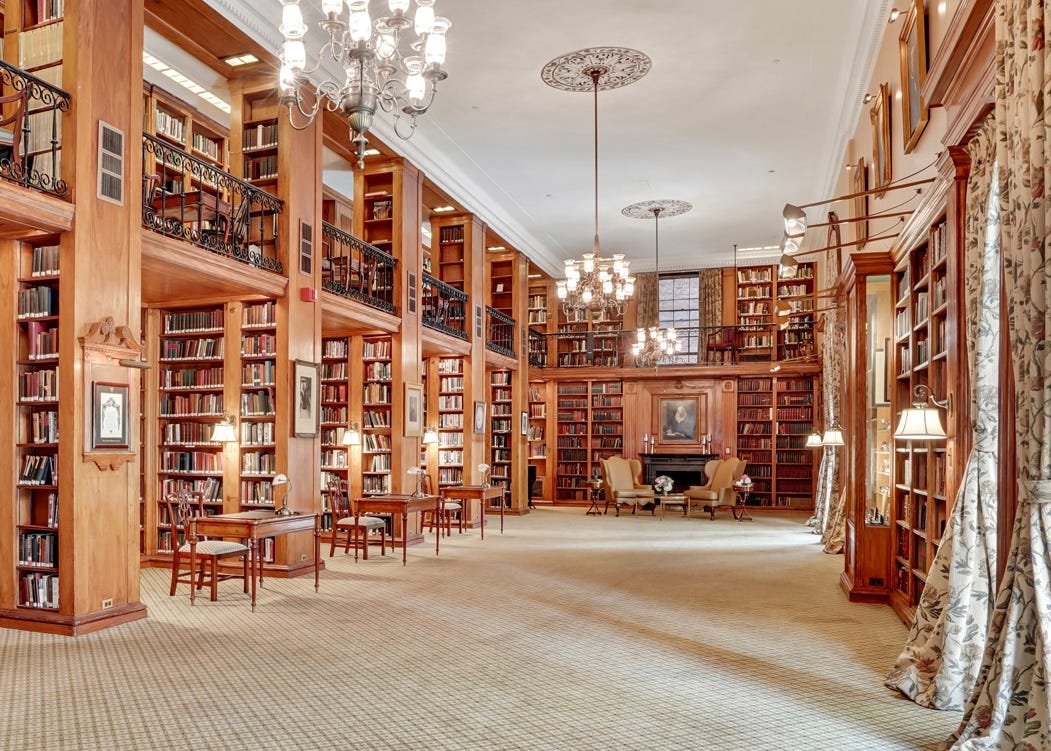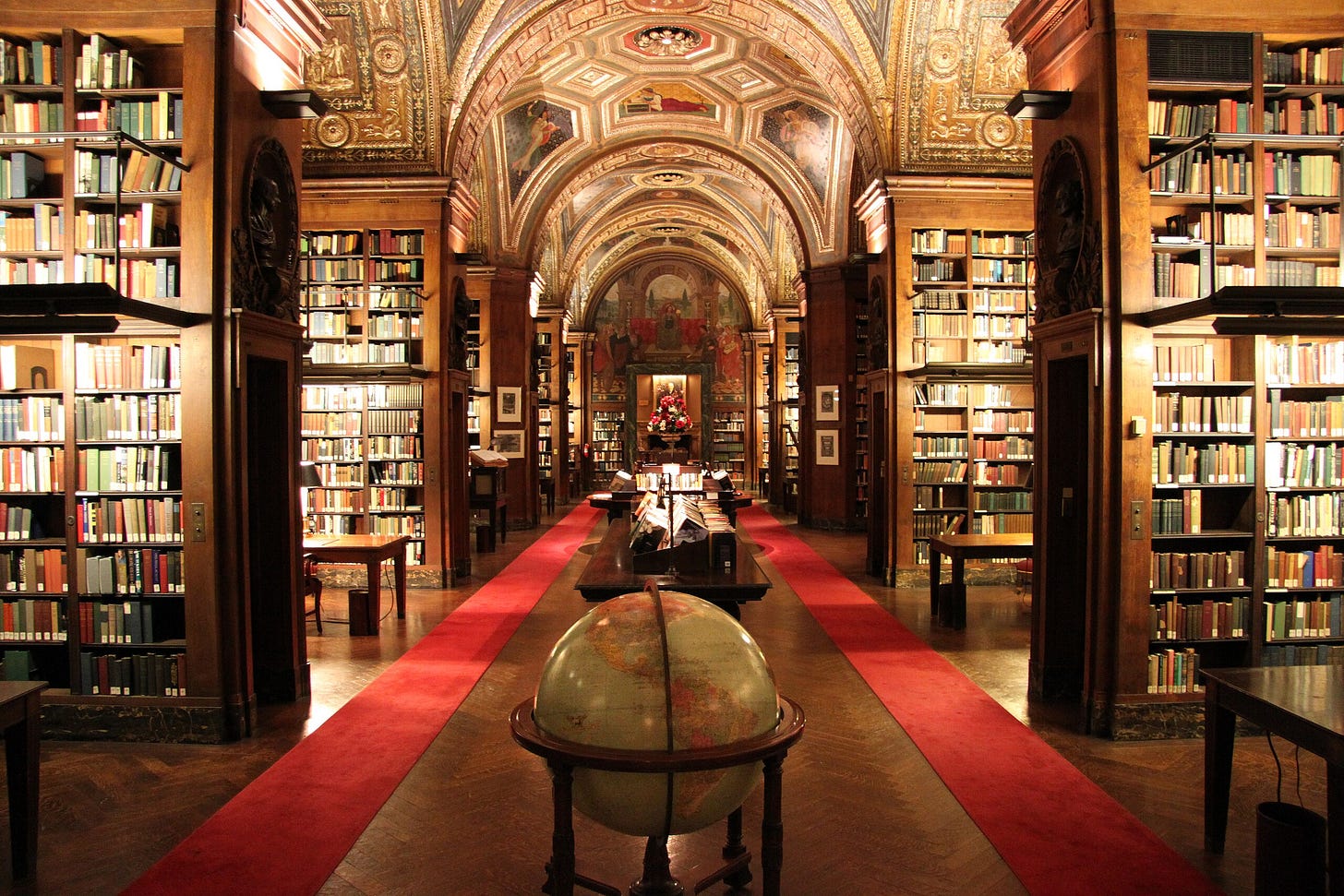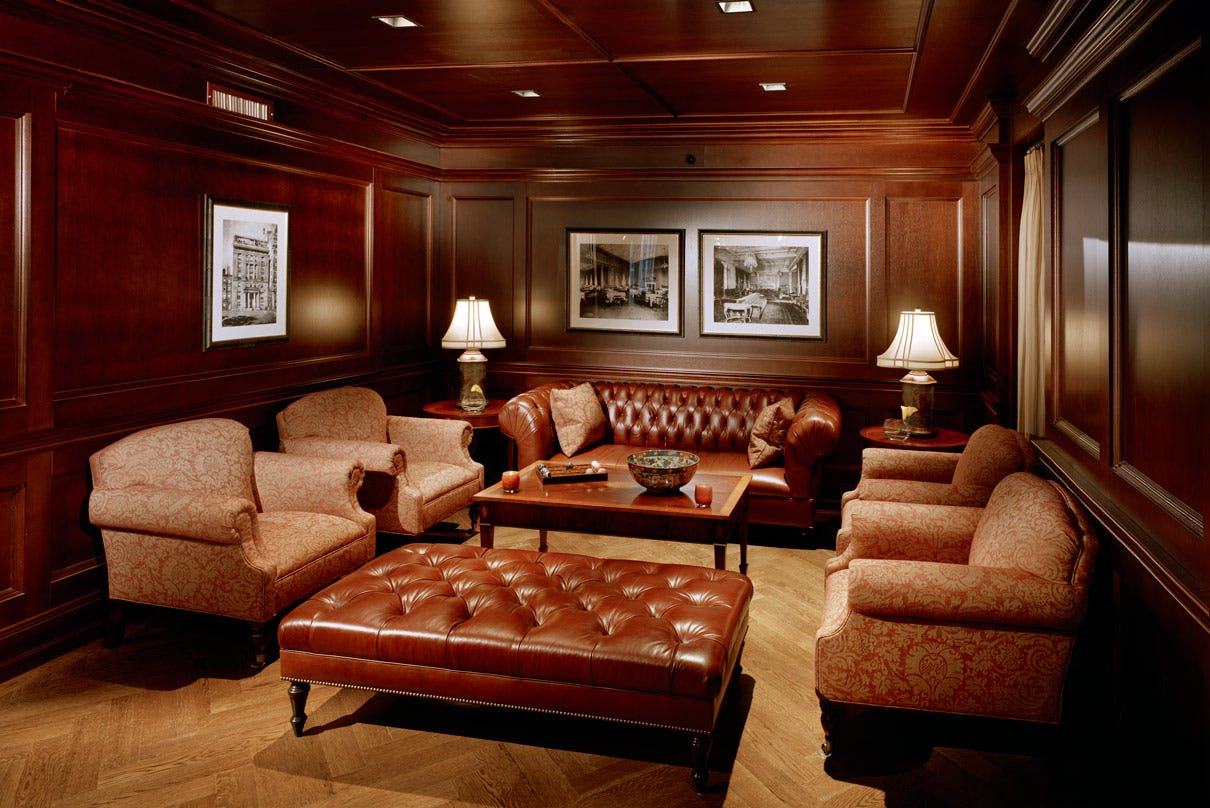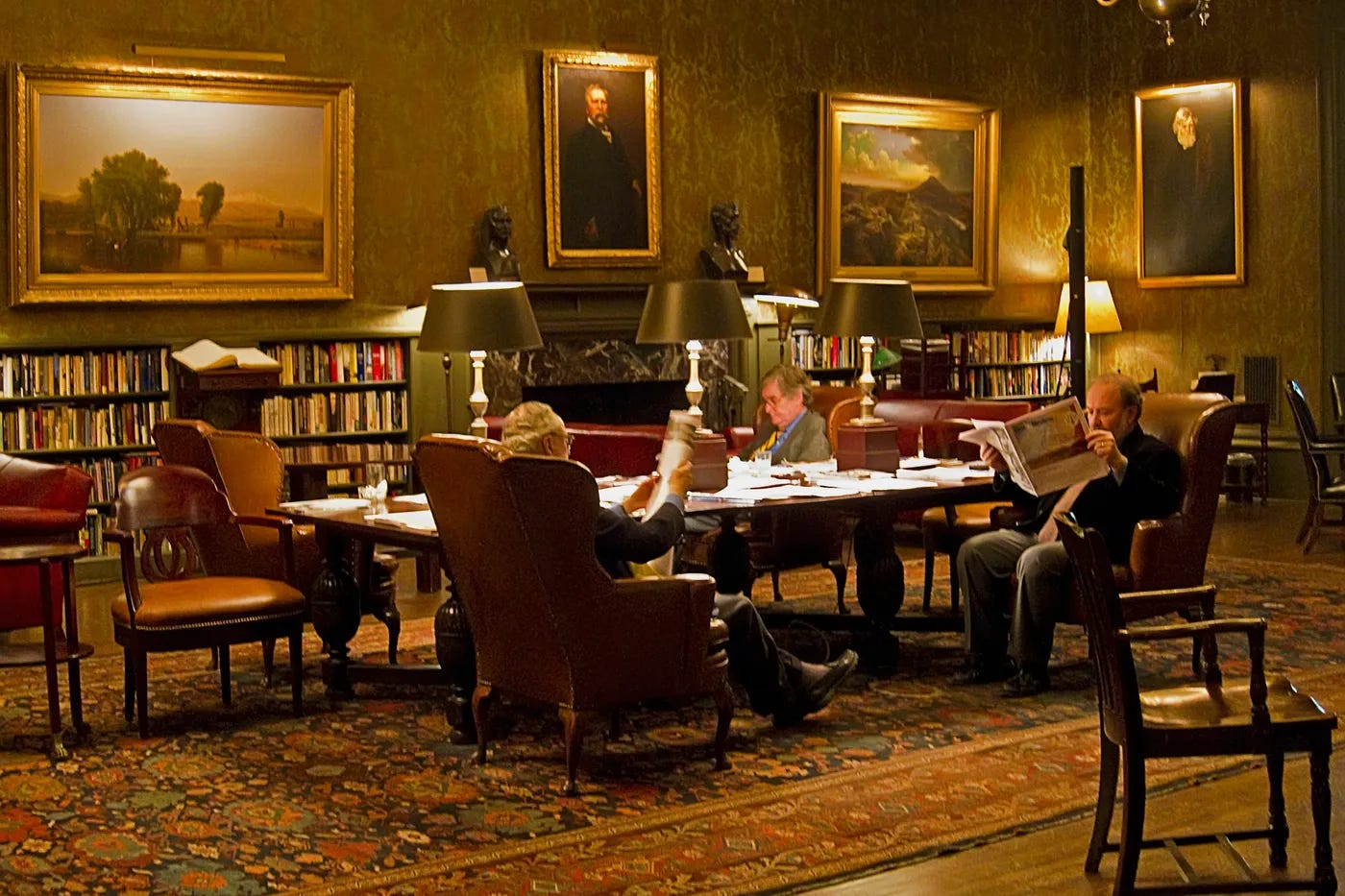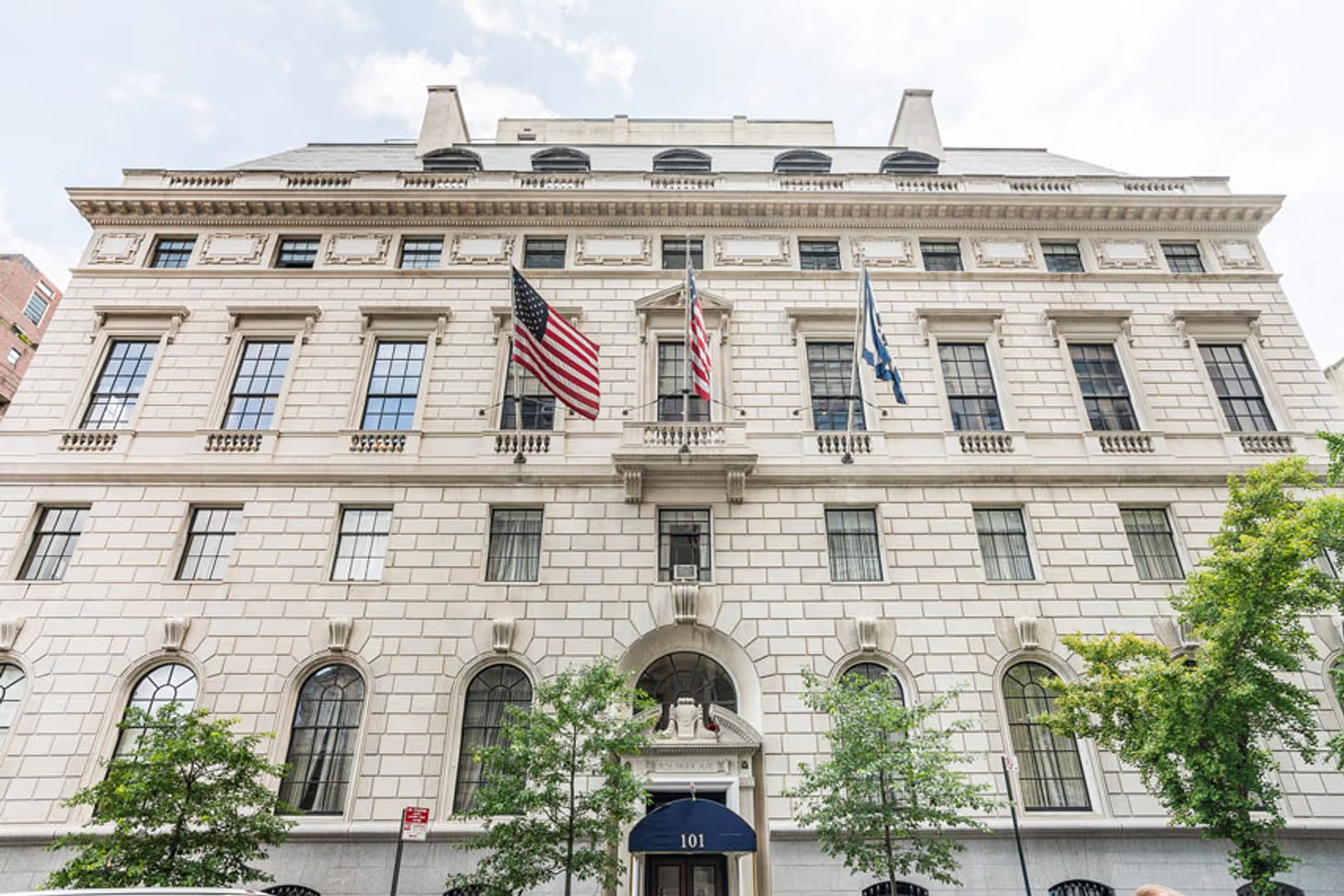The Top 10 Oldest Social Clubs in New York City
Inside the old guard: A guide to Manhattan’s most historic private clubs.
In New York, some of the most impressive buildings are also the quietest. They are grand, often window-shaded structures with no name on the door, existing as silent holdouts from a bygone era. These are the city’s private members’ clubs.
Founded in the 19th century, they were built as sanctuaries for the new elite. Long before Core Club or Zero Bond, these were the original “third spaces” – private spheres between home and office where members dine, connect, and conduct business.
But what’s really going on inside? More than just a quiet bar, these clubs are often comprehensive social worlds. They feature stunning libraries, private athletic facilities, formal dining rooms, guest suites, and even barbershops. They’re a carefully curated bubble for members.
The new generation of clubs is built on “creatives” and social media – they are places to be seen. These old-guard institutions were – and still are, in most cases – the opposite: running on tradition, legacy, and discretion. Of course, getting in isn’t the simplest of endeavours. It’s a formal process of invitation, sponsorship from current members, and a final vote by a committee.
10. The Lotos Club
Founded: 1870
Address: 5 East 66th Street
The Mood: Literary, Artistic, & Cultural
Estimated Costs: Costs are kept entirely private and are not publicly disclosed.
The Story: The Lotos Club is one of America’s oldest literary clubs and counts Mark Twain – who called it “The Ace of Clubs” – as a notable past member. It has always had a more inclusive outlook, hosting “Ladies’ Days” as early as 1872. Its “State Dinners” have honoured U.S. Presidents, explorers like Amelia Earhart, and artists like Leonard Bernstein.
Architecture & Facilities: The club is housed in a magnificent 1900 French Renaissance-style townhouse, a former mansion built for a daughter of William H. Vanderbilt. The facilities are centred on dining, intellectual pursuits, and events, featuring a grand library, a ballroom, and multiple dining venues.
9. The Lambs Club
Founded: 1869
Address: 3 West 51st Street
The Mood: Theatrical & Historic
Estimated Costs: Costs are kept entirely private and are not publicly disclosed.
The Story: The Lambs is America’s first professional theatrical club, named after the 18th-century English essayist Charles Lamb. It was founded as a social club for actors and others associated with the theatre. Its membership has included legends like Fred Astaire, Charlie Chaplin, and W.C. Fields, and it functions today as both a social club and a historical society.
Architecture & Facilities: The club is now housed within 3 West Club, a building it shares with the Women’s National Republican Club. It maintains a collection of “knick-knacks” and artifacts from its long theatrical history, including speakeasy cards from Prohibition and actors’ railroad tickets.
8. New York Athletic Club (NYAC)
Founded: 1868
Address: 180 Central Park South
The Mood: Athletic Powerhouse
Estimated Costs: For a senior resident member (35+), the initiation fee is approximately $9,000, with annual dues around $3,600.
The Story: The NYAC was founded to bring order and regulation to the world of amateur sports. It quickly became a dominant force, organizing the first U.S. championships in boxing, swimming, and track. Its members have won hundreds of Olympic medals, and it remains a club for those who are serious about sports.
Architecture & Facilities: This is a 24-floor athletic and social titan overlooking Central Park. The facilities are second to none: multiple pools, a full-size basketball court, a boxing ring, fencing and wrestling rooms, squash courts, a gym, and a spa. Socially, it has grand dining halls, a taproom, and one of the most famous rooftop bars in the city.
7. Harvard Club of New York City
Founded: 1865
Address: 27 West 44th Street
The Mood: Ivy League Power Hub
Estimated Costs: Costs are entirely private, tiered by age and proximity to the club.
The Story: Founded by a small group of alumni shortly after the Civil War, the Harvard Club met in rented spaces for decades. It quickly grew into a major power center for its members, a true home-away-from-home for generations of the East Coast elite.
Architecture & Facilities: Its 1894 neo-Georgian clubhouse, with its unmistakable red brick and classical columns, was designed by esteemed architect Charles McKim (a club member himself). The building has been expanded multiple times and is a designated landmark, housing a famous library, athletic facilities including squash courts, multiple dining rooms, and overnight guest rooms.
6. The Union League Club
Founded: 1863
Address: 38 East 37th Street
The Mood: Patriotic & Establishment
Estimated Costs: Costs are kept entirely private and are not publicly disclosed.
The Story: The Union League Club was founded during the height of the Civil War with a clear and opposite purpose to the (perceived) Confederate-sympathizing Union Club. Its founders were pro-Union patriots dedicated to supporting the war effort. It also helped fund major cultural projects like the Metropolitan Museum of Art and the Statue of Liberty.
Architecture & Facilities: Its current 1931 Georgian-style clubhouse, designed by Benjamin Wistar Morris, is its fourth home. It remains a massive institution with a strong patriotic and civic focus. It houses a large art collection, a library, extensive athletic facilities, dining rooms, and overnight accommodations. Fifteen U.S. Presidents have been members.
5. The University Club of New York
Founded: 1861
Address: 1 West 54th Street
The Mood: Academic & Professional Elite
Estimated Costs: Fees are heavily age-dependent. Senior member dues are reportedly in the $5,000 - $10,000+ range, with an initiation fee estimated at around $14,000.
The Story: The other great collegiate club, the University Club was founded by a group of college graduates (primarily from Yale) to blend social and intellectual life. It remains a bastion for the city’s prominent academic, legal, financial, and professional elite.
Architecture & Facilities: Its 1899 clubhouse is a celebrated masterpiece from the legendary architectural firm McKim, Mead & White. It is a nine-story granite Italian Renaissance palace. The facilities are staggering: a 150,000-volume library, a 30-foot-high Grand Hall, world-class squash courts, a pool, and dozens of opulent overnight guest rooms, making it a “city within a city.”
4. The Down Town Association
Founded: 1859
Address: 60 Pine Street
The Mood: Wall Street Tradition
Estimated Costs: Costs are kept entirely private and are not publicly disclosed.
The Story: Located in the heart of the Financial District, this club was founded in 1859, making it the oldest in Lower Manhattan. It was established as an exclusive “lunch club” for the lawyers, bankers, and merchants of Wall Street – a quiet sanctuary where the men building America’s finances could meet for one too many martinis.
Architecture & Facilities: Its beautiful 1887 Romanesque-Revival clubhouse is a landmark. This is a traditional club focused on food and service, not athletics, though it now includes a gym and billiards room. It is famous for its classic “Oyster Bar” and traditional, power-lunch-focused dining rooms.
3. The Harmonie Club
Founded: 1852
Address: 4 East 60th Street
The Mood: Prominent & Influential
Estimated Costs: Annual dues are reportedly age-dependent, ranging from $1,500 to $6,000, with a similarly tiered initiation fee.
The Story: The founding of the Harmonie Club is a significant chapter in New York’s social history. It was established by prominent German-Jewish New Yorkers as their own vital social and cultural hub, at a time when other prominent clubs disgracefully excluded them.
Architecture & Facilities: Its magnificent 1905 Beaux-Arts clubhouse, designed by Stanford White, is an icon. It is a full-service social and athletic club, known for its strong community, a renowned swimming pool, squash courts, a large gym, and multiple elegant dining venues.
2. The Century Association
Founded: 1847
Address: 7 West 43rd Street
The Mood: Arts, Letters, & Intellect
Estimated Costs: Costs are kept entirely private, though annual dues are rumoured to be in the $5,000 range.
The Story: If the Union Club was about “who you are,” the Century has always been about “what you’ve done.” Founded by artists and writers, it was a gathering place for New York’s great creative and intellectual minds. Membership is considered a high honour, and it’s still a haven for authors, artists, academics, and architects.
Architecture & Facilities: Its 1891 Stanford White-designed clubhouse is an Italian Renaissance-style gem. It is not an athletic club; the focus is squarely on its art collection, library, and lecture hall. The grand, double-height “Art Gallery” is its centrepiece, hosting rotating exhibitions.
1. The Union Club of the City of New York
Founded: 1836
Address: 101 East 69th Street
The Mood: The Old-Guard Original
Estimated Costs: Reported initiation fees are around $50,000, with annual dues estimated at $10,000.
The Story: This, simply, is the ‘mother of clubs.’ Founded by and for the city’s absolute social elite (the Astors, Vanderbilts, and Rockefellers), it is the oldest private club in New York. For nearly two centuries, it has stood as the definitive – and most exclusive – symbol of old-guard New York society.
Architecture & Facilities: Its imposing 1933 landmark clubhouse on Park Avenue, designed by Delano & Aldrich, is the definition of discretion. Inside, it is a bastion of traditional service, featuring grand dining halls, a library, squash courts, a humidor, and a famous backgammon room.


